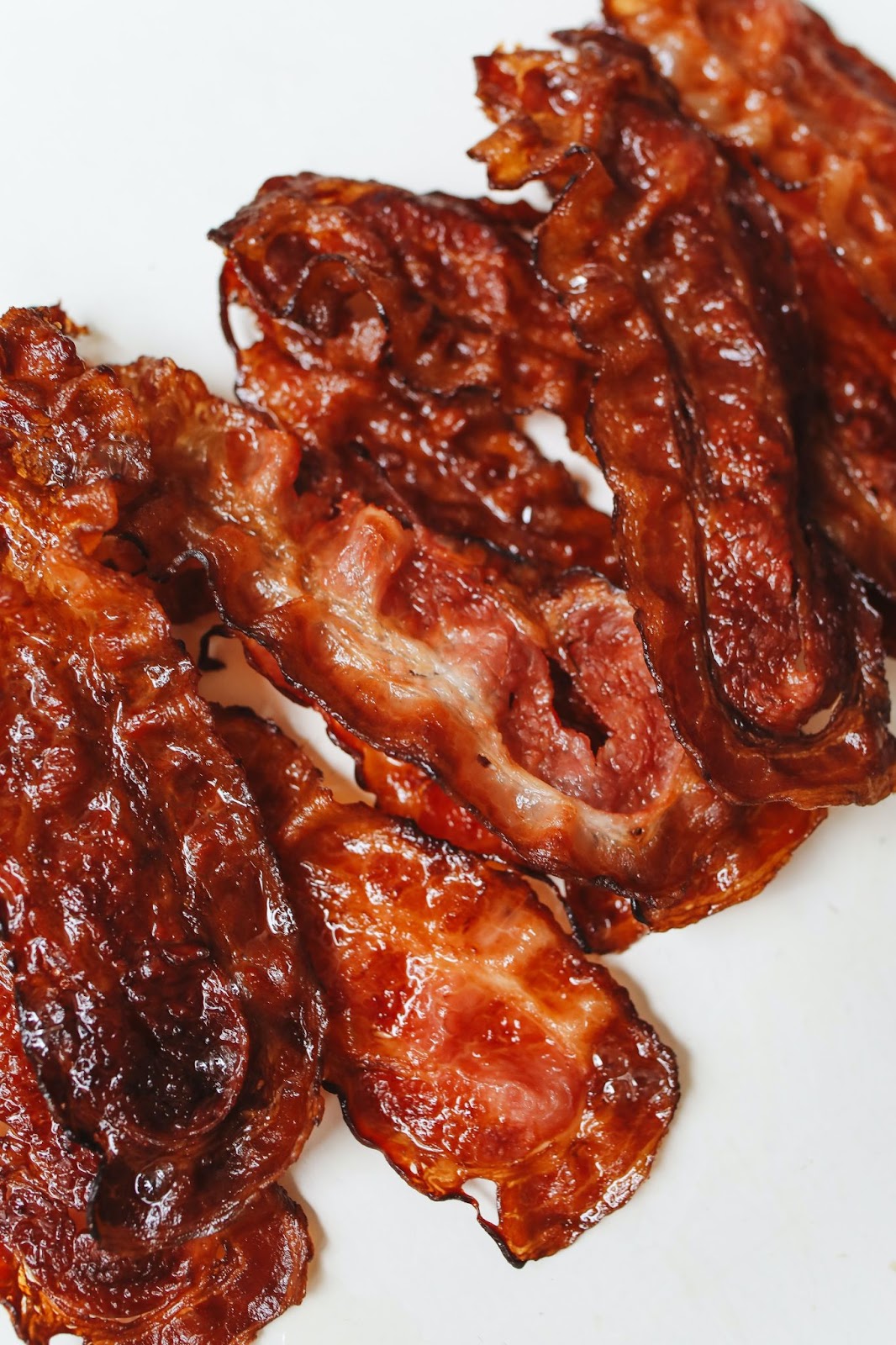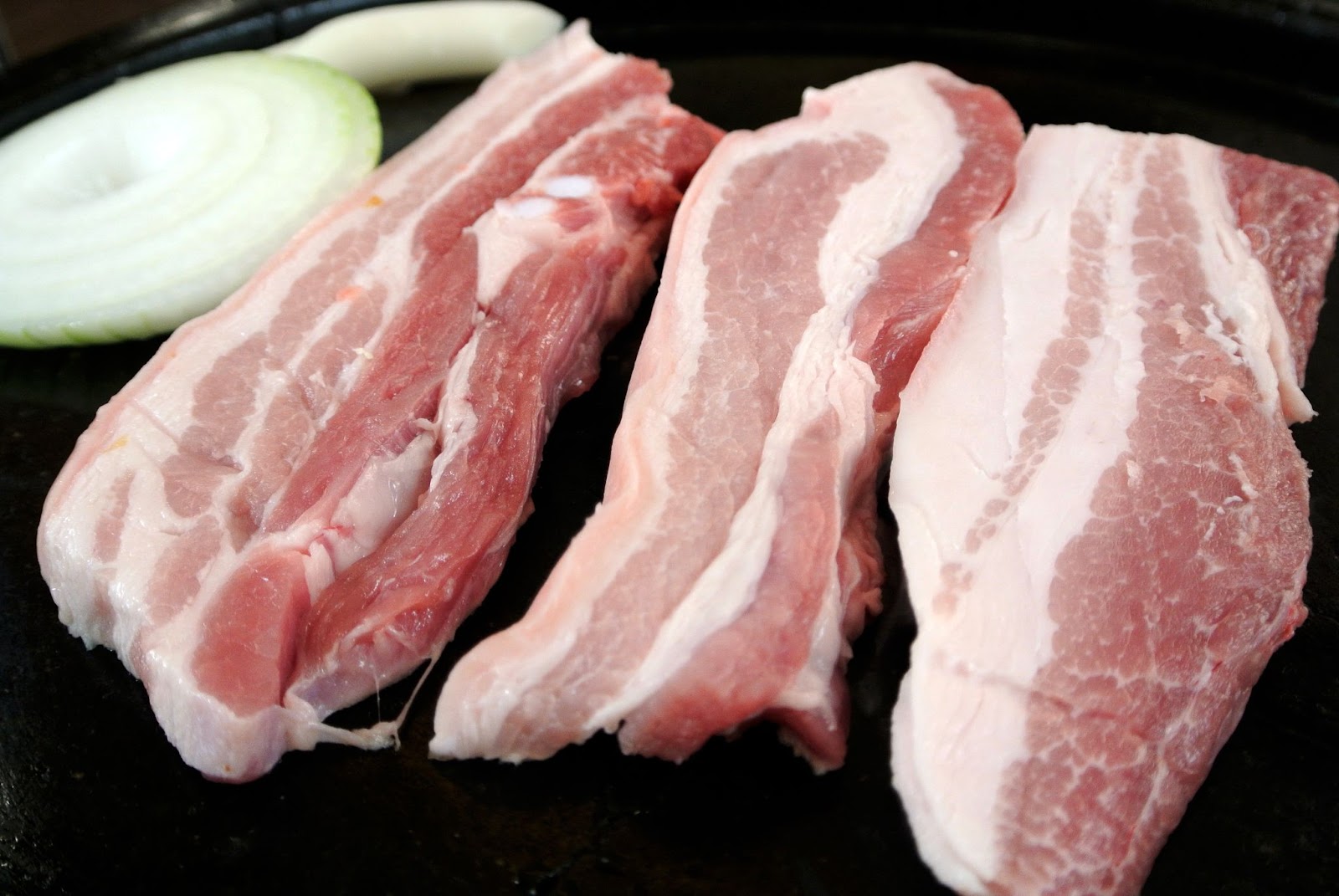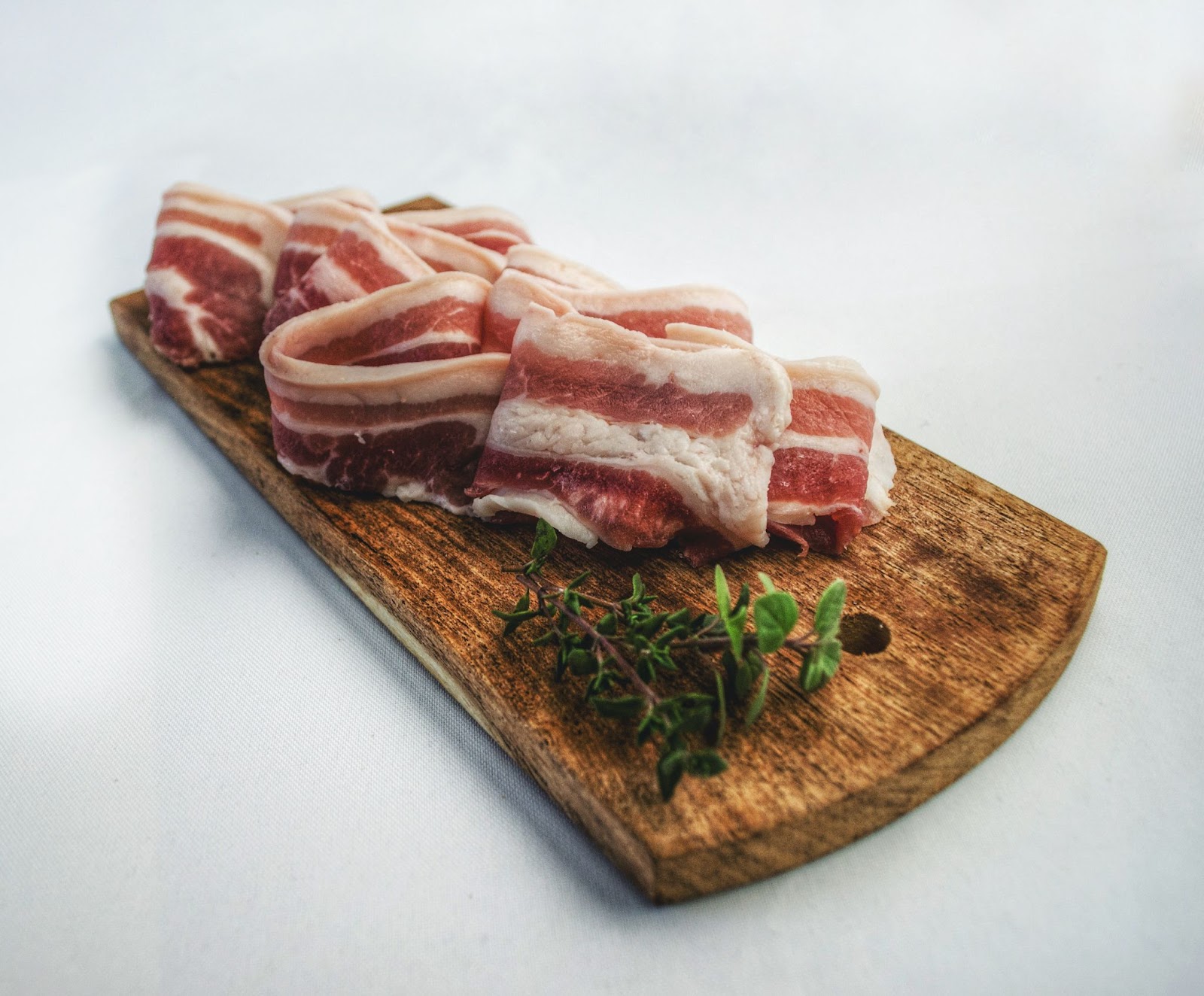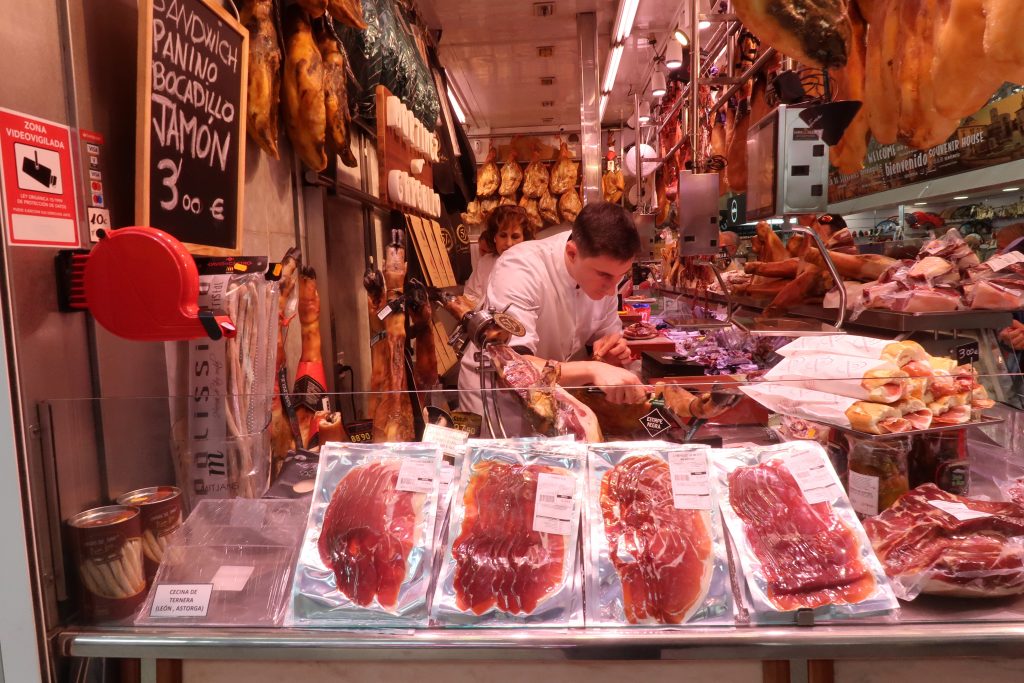Bacon in Spanish: Let’s try Beicon, Tocino, Panceta, and Chicharrones!

Get our free email course, Shortcut to Conversational.
Have conversations faster, understand people when they speak fast, and other tested tips to learn faster.
More infoBacon is popular all over the world. There are so many types of bacon, each with their own textures and flavors, but what really unifies all the bacon types is that people find them all to be delicious! Bacon is popular at breakfast, lunch, and dinner. It can be used as a central ingredient, as a side dish, or as a flavoring. It can even be found in bacony desserts or in tasty drinks like bacon vodka!
People all over the world love bacon, and Latin America and Spain are certainly among the biggest bacon lovers. In this post we’ll learn how to talk about bacon in Spanish, and how the different Spanish-speaking countries refer to and prepare different types of tasty bacon meat.
So now that you’re imagining the sweet smell of bacon fat and pondering the question of “is bacon good for you?,” we’re ready to set the table for our delicious Spanish meat adventure!
Bacon – Tocineta – Panceta – Tocino – Chicharrón
Historically, bacon was a common food of rural people since it was cheap and, after being cured, easy to preserve. How is bacon made? Well, while this isn’t a general post about pork in Spanish, we’ll at least say that most of the tasty meat we’re talking about here comes from pork belly. In Spanish, this is really what we’re thinking of with el beicon!
Nonetheless, our different Spanish bacon types vary by name according to the region and the way they’re prepared and cured. Get ready for details on panceta vs bacon vs tocino vs tocineta vs chicharrón!
Bacon or Beicon or Tocineta
Obviously, the term bacon or beicon has been borrowed from English. El bacon or el beicon is what most Spaniards use to describe pork meat that has gone through a smoking process. This is the type of bacon that is closest to what most Americans are familiar with.
In some Latin American countries like Colombia, Cuba, Mexico, Venezuela, or Panamá, this bacon is called la tocineta. This tocineta meat has a high fat content so its taste is very intense, while it’s also very versatile in cooking because of its flavorful bacon grease. Common bacon recipes see it used in bean stews, with potatoes, and to prepare pies. Besides, it’s included in breakfasts all around the world!
Tocino or Panceta
La panceta, also called el tocino, is cured with salt. Some people add butter and aromatic herbs to the curing method. Both tocino and panceta can be used interchangeably to refer to this type of bacon meat, though there are regional preferences. In Mexico people say tocino, for example, whereas the term panceta is mainly used in Argentina.
When comparing panceta vs bacon, el tocino has more meat and doesn’t contain as much fat as la tocineta we saw in the prevoius section. The taste is a bit less intense, while the texture isn’t quite as soft as well-cooked bacon.
La panceta can be consumed in thin slices or in small cubes. Some of the most popular panceta recipes use thin slices of tocino wrapped around dates or plums. These bite-sized sweet-and-sour delicacies known as dátiles o ciruelas envueltas en tocino are served as appetizers.
A big slice of tocino is also the perfect addition to any burger to create the world-renowned hamburguesa con panceta, which is our delicious bacon burger in Spanish. Otherwise, it’s ideal to add flavor to any cuts of roasted meat by wrapping them in tocino.
 Chicharrones
Chicharrones
Chicharrón is another amazing way to prepare pork belly, which is often much drier and crunchier than the previous types of bacon we’ve seen so far. Chicharrones in English are similar to pork rinds. In Spanish though, we have different ways of cooking or preparing them depending on the region. Whether pork meat and rind are included or not, you bet all the variants are really delicious!
In Colombia, a very popular way of preparing chicharrón with pork belly is by deep-frying the pig skin with the meat attached. The meat is slowly and gradually fried in its own fat, making delicious juicy bite-sized morsels! In case you’re already craving them and are wondering how to make chicharrones, we love this mouthwatering chicharrón recipe.
Chicharrones are very popular throughout Latin America. Chicharrón can be served as a dish on its own, while it’s also common to use the pork belly skin to stuff pies or arepas, or even to include them in little pieces inside bread. Chicharrón is such a popular flavor that you can even find bags of chicharrones chips at the supermarket!
Other types of ham in Spanish
So far this post has been all about bacon bacon bacon, focusing exclusively on different types of bacon meat in Spanish-speaking countries. To round out our discussion though, let’s just point out a few other popular types of pork Spanish countries are famous for.
First, let’s translate the basics. The general term for pork in Spanish is cerdo, which is also how we call pigs in Spanish: los cerdos. In Spanish, ham is el jamón, while meat in Spanish is el carne.
The most-common types of cured ham in Spain are actually cut from cured pig legs that are salted and hung to dry for many months. These varieties of jamón iberico and jamón serrano are cut thinly and are usually eaten at room temperature. Their taste is delicate and salty, with varying soft textures. Jamón slices are enjoyed on their own as a snack or tapas, or eaten with bread or cheese, or even wrapped around fresh melon.
In Europe, just saying “jamón” in English usually implies that you’re talking about this type of Spanish ham. While they are fairly different from our beloved bacons, we still recommend you try iberico ham or serrano ham if you get a chance!
Conclusion: We all love bacon!
No matter how people from different places may name or prepare different types bacon, it can’t be denied that bacon is an extremely popular food all around the world. Now that you know the differences in flavor and names of bacon in Spanish, you’re all set to eat your way around Latin America.
While you’re there and reveling in your baconmania, you’ll surely want to order the various types of bacon in Spanish at the local restaurants. In case you need some other useful vocab beyond el beicon, we recommend our dedicated post on how to order food in Spanish.
In closing, whenever someone mentions tocineta, panceta, tocino, beicon or chicharrón, you’re now ready to talk about each of these types of bacon in Spanish and to give it a taste too!



 Chicharrones
Chicharrones



